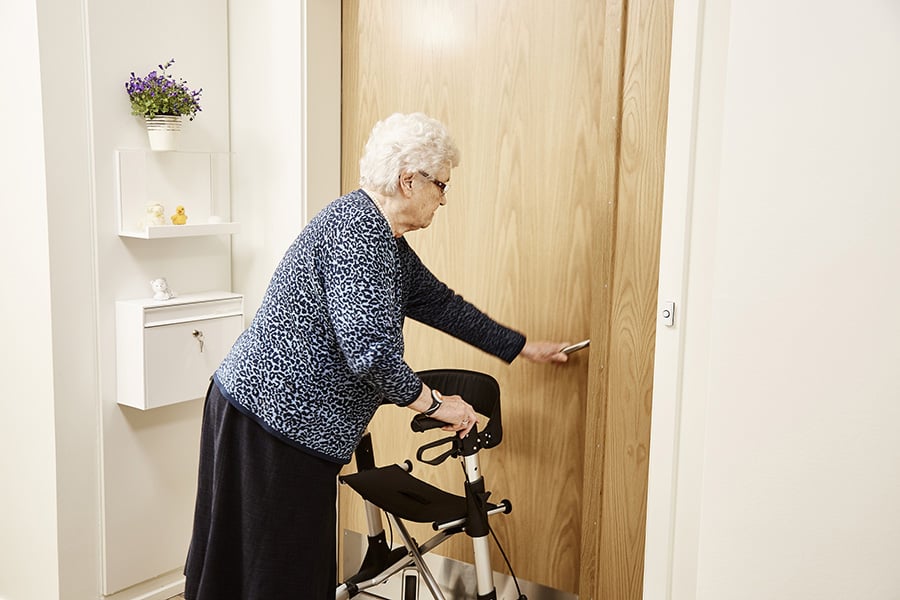NHS virtual wards offering hospital-level care at home treats over 100,000 patients a year

More than 100,000 patients have been treated in NHS virtual wards in the last year, with 16,000 patients treated in January alone, according to a report by NHS England.
Virtual wards allow patients to get hospital-level care at home safely and in familiar surroundings, helping speed up their recovery while freeing up hospital beds for patients that need them most.
There are now more than 340 virtual ward programmes across England – 58 opened in January – including a total of 7,653 virtual beds.
NHS teams have worked hard to increase numbers by almost two thirds since May 2022, when 4,485 were available for patients – an average of nine new virtual ward beds each day.
These ‘Hospital at Home’ models help reduce avoidable admissions by providing the hospital-level care at home.
People on a virtual ward are cared for by a multi-skilled team who can provide a range of tests and treatments, including blood tests, prescribing medication or administering fluids through an intravenous drip.
Patients are reviewed daily by the clinical team and the ‘ward round’ may involve a home visit or take place through video technology. Many virtual wards use technology like apps, wearables and other medical devices enabling clinical staff to easily check in and monitor their recovery.
Frimley Health provides acute hospital care to patients in their homes, with 83% of patients estimated to avoid hospital admission. Between July 2022 and January 2023, 774 patients were cared for across local communities.
These innovative virtual wards were a key part of the NHS urgent and emergency care recovery plan, launched at the end of January, with a goal of treating up to 50,000 patients a month.
The plan also outlined a series of other measures aimed at reducing pressure on the NHS and bringing down waiting times, including an expansion of community falls and frailty services, urgent community response teams, as well as creating more physical beds in hospital.
Professor Sir Stephen Powis, NHS national medical director, said: “The advantages of virtual wards for both staff and patients have been a real game-changer for the way hospital care is delivered and so it is a huge achievement that more than 100,000 patients have been able to benefit in the last year alone, with the number of beds up by nearly two thirds in less than a year.
“With up to a fifth of emergency hospital admissions estimated to be avoided through better supporting vulnerable patients at home and in the community, these world leading programmes are making a real difference not just to the people they directly benefit but also in reducing pressure on wider services.”
The Telehealth Team, run by Mersey Care NHS Foundation Trust, supports around 2,000 patients a day with conditions like COPD, diabetes and heart failure.
Nurse Nisha Jose, clinical team leader at Mersey Care’s Clinical Telehealth Hub, said: “People yearn for normality and the comfort of home, yet when they get home, they may become worried.
“With our virtual ward programme, we can do everything that would happen on a hospital ward. We take observations every six hours to identify any issues and we can even carry out ECGs at the patient’s home. It has truly transformed the way we deliver care.”
Sayanthan Ganesaratnam, a GP in Merton said: “As a GP, I work collaboratively with the Hospital at Home team to support patients who are at risk of being admitted to hospital and need step-up care.
“This is beneficial to patients as, rather than going into hospital for potentially lengthy stays, they can stay at home, receive excellent care and be monitored closely in familiar surroundings.
“And should a patient start to feel unwell, there are systems in place to quickly alert a clinician, reducing the possibility of an emergency re-admission.”
In July 2022, the Department of Health and Social Care (DHSC) announced a number of digital reforms to deliver benefits over the next 10 years that facilitate faster and more personalised health and social care. Its plans, it stated, would include the rapid expansion of the use of technology like remote monitoring and virtual wards to: drive efficiency, free up hospital space and clinician time, saving the health and social care systems money, and helping to tackle the COVID backlogs.


